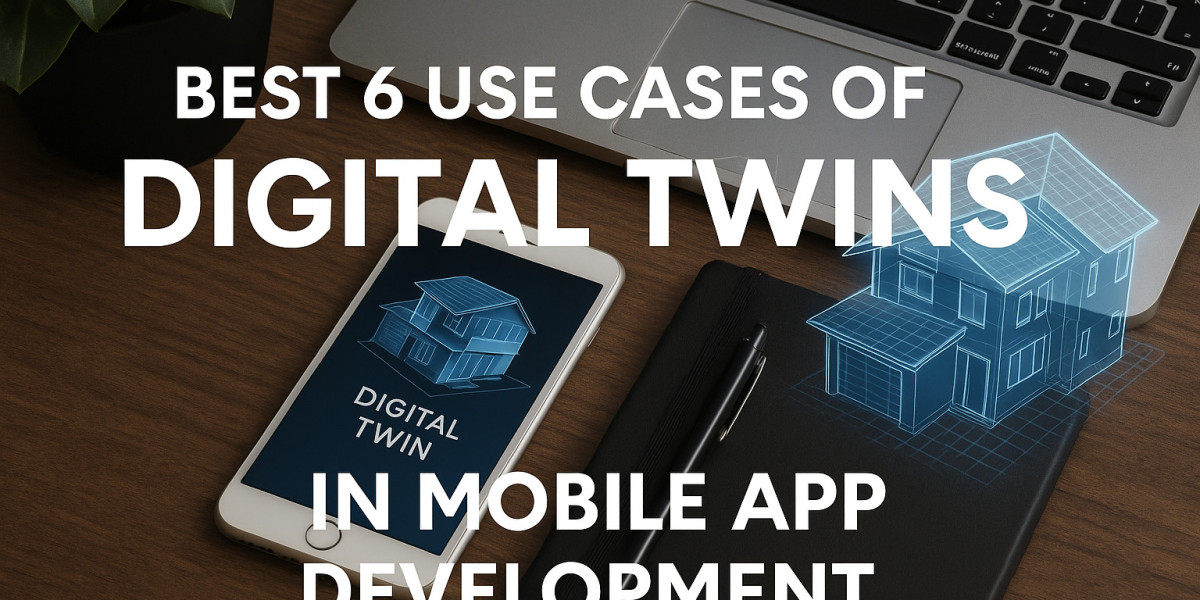The concept of a "digital twin" – a virtual replica of a physical object, system, or process – is rapidly moving from industrial applications to directly influence mobile app development. By creating a live, dynamic digital counterpart that mirrors its real-world twin through real-time data, simulation, and modeling, mobile apps can offer unprecedented levels of monitoring, control, analysis, and personalization. This technology is fundamentally changing how users interact with the physical world through their smartphones and tablets.
For any forward-thinking Mobile App Development Agency, understanding and integrating digital twin technology opens up a wealth of opportunities to create highly sophisticated, data-driven, and truly innovative applications across various sectors. It's about bridging the gap between the digital and physical, offering users insights and control previously unimaginable.
Here are 6 compelling use cases of digital twins in mobile app development:
1. Predictive Maintenance and Asset Management
One of the most established and impactful applications of digital twins is in monitoring and managing physical assets, especially in industrial or infrastructure settings. Mobile apps act as the user interface to these digital twins.
How it works: Sensors embedded in machinery, vehicles, or infrastructure components (e.g., HVAC systems, production line robots, utility grids) continuously collect data on performance, temperature, vibration, wear, and tear. This real-time data feeds into a digital twin, which simulates the asset's current state and predicts future behavior. A mobile app provides a dashboard view of this digital twin, allowing operators and maintenance teams to monitor asset health, view alerts, and access performance analytics from anywhere.
Mobile App Impact: A mobile app for a facility manager could show the real-time status of all critical equipment, identify potential failures before they occur through predictive analytics from the digital twin, and even allow technicians to schedule maintenance or remotely adjust settings. This drastically reduces downtime, extends asset lifespan, and optimizes operational efficiency. For a Mobile App Development Agency working with industrial clients, this is a game-changer.
2. Smart City Management and Urban Planning
Digital twins are becoming instrumental in creating "living" models of entire urban environments, with mobile apps serving as the interactive interface for citizens and city planners.
How it works: A digital twin of a city integrates real-time data from various sources: traffic sensors, public transport systems, environmental monitors, energy grids, and waste management systems. This comprehensive virtual model allows for simulation of different scenarios (e.g., impact of new construction, traffic reroutes, emergency responses) and real-time monitoring of urban infrastructure.
Mobile App Impact: Citizen-facing apps can leverage this digital twin to provide real-time updates on public transport delays, air quality alerts, or even suggest optimal routes to avoid congestion. City planners, using a specialized mobile app, can simulate the impact of new developments, manage resources more efficiently, and respond to incidents (like traffic accidents or utility outages) with greater speed and precision, all while viewing the city's live pulse on their mobile device.
3. Personalized Healthcare and Wellness Monitoring
The concept of a "human digital twin" is emerging in healthcare, where a virtual model of an individual's physiological state can offer highly personalized health insights via mobile apps.
How it works: Data from wearables (smartwatches, fitness trackers), medical devices, electronic health records (EHRs), and even genetic information feeds into a personalized digital twin. This twin can simulate how a patient's body might react to different treatments, predict the onset of certain conditions, or track recovery progress in real-time.
Mobile App Impact: A mobile health app could display a user's "digital twin" showing their current vital signs, sleep patterns, or stress levels. It might predict a risk of dehydration based on activity and environmental data, and proactively suggest fluid intake. For patients with chronic conditions, the app could show how medication adjustments impact their unique physiological twin, enabling highly personalized care and predictive interventions, enhancing the value proposition for Mobile App Development Agency in the health sector.
4. Retail and Customer Experience Enhancement
Digital twins can optimize retail operations and personalize the shopping experience, extending from store layouts to individual customer journeys, all accessible via mobile apps.
How it works: Retailers can create digital twins of their physical stores, inventory, and even customer behavior patterns. Sensors track foot traffic, product interactions, and stock levels. This data helps simulate optimal store layouts, inventory placement, and staff deployment.
Mobile App Impact: A shopping app could use the digital twin of a store to guide a customer to specific items, or to show real-time stock availability. It could leverage a customer's personal shopping "digital twin" (based on past purchases and Browse) to offer hyper-personalized recommendations or virtual try-ons using AR, enhancing engagement and conversion rates. This allows for dynamic pricing and inventory management visible through a manager's mobile app, improving operational efficiency.
5. Smart Home and Building Automation
Connecting digital twins with smart home devices allows for centralized, intelligent control and monitoring via mobile applications.
How it works: A digital twin of a home or office building integrates data from smart thermostats, lighting systems, security cameras, smart appliances, and energy meters. This twin provides a comprehensive, real-time view of the building's environmental conditions, energy consumption, and security status. It can also simulate the impact of changes (e.g., adjusting temperature, opening blinds).
Mobile App Impact: A mobile app for a homeowner allows them to remotely monitor and control all aspects of their smart home through its digital twin. They can see energy consumption patterns, adjust climate controls for optimal efficiency, or even receive alerts if an anomaly is detected. For building managers, a similar app offers granular control over large commercial spaces, optimizing energy usage and maintenance schedules based on the building's live digital twin.
6. Enhanced Product Design and Virtual Prototyping
While traditionally a desktop application use case, mobile apps can now offer valuable interfaces for interacting with and visualizing digital twins in product development.
How it works: Before physical prototypes are built, a digital twin of a product (e.g., a new car model, a consumer electronic device) is created. This twin is subjected to various simulations to test performance, durability, and user interaction in a virtual environment. Data from early physical tests can feed back into the digital twin for refinement.
Mobile App Impact: While complex design work might still happen on larger screens, a mobile app could allow engineers or designers to review 3D models of the product's digital twin on the go, making annotations, viewing simulation results, or even initiating new test parameters remotely. This accelerates the design cycle, reduces the need for expensive physical prototypes, and allows for rapid iteration and decision-making, which is highly beneficial for any Mobile App Development Agency focused on product innovation.
Conclusion
Digital twin technology is poised to revolutionize mobile app development by creating a dynamic, real-time link between the physical and digital worlds. For a Mobile App Development Agency, embracing these use cases means delivering applications that offer unprecedented levels of insight, control, and efficiency across a multitude of industries. The future of mobile apps is not just about digital interfaces, but about intelligent digital representations that empower users to interact with and understand their physical environment in entirely new and profound ways.







